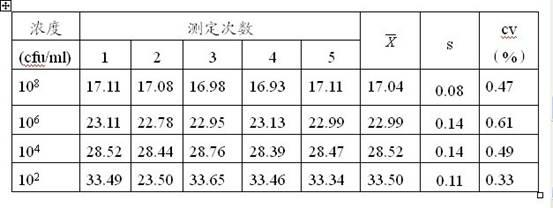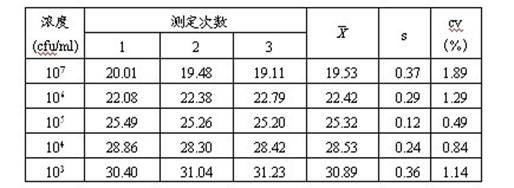Method for detecting Aeromonas hydrophila by FQ-PCR (fluorescent quantitative polymerase chain reaction)
A technology for Aeromonas hydrophila and strains, which is applied in the field of detecting Aeromonas hydrophila by FQ-PCR, can solve the problems of inability to quantitatively measure, unstable biochemical characteristics, complex serotypes, etc. Effect
- Summary
- Abstract
- Description
- Claims
- Application Information
AI Technical Summary
Problems solved by technology
Method used
Image
Examples
Embodiment Construction
[0023] The detection concrete steps of the inventive method are:
[0024] 1. DNA extraction from samples (template preparation):
[0025] Take 1ml of the supernatant of the sample suspension and add it to a 1.5ml sterile eppendorf centrifuge tube, centrifuge at a speed of 15000r / min for 2min, discard the supernatant and keep the precipitate;
[0026] Add 50 μl of DNA extractant to the precipitate, mix the precipitate and DNA extractant evenly, and heat up to 100°C for 2 min. The DNA extraction agent is composed of 0.9% NaCl by weight volume percentage, 0.01% SDS by weight volume percentage, 0.1% β-mercaptoethanol by volume percentage, and the rest is water;
[0027] Then centrifuge at 15000r / min for 2min, and the supernatant obtained is the template for PCR.
[0028] 2. PCR
[0029] 1. Preparation of amplification reaction solution:
[0030] ① Take out the kit from the refrigerator;
[0031] The kit contains reagents sealed in reagent bottles, and the packing list is...
PUM
 Login to View More
Login to View More Abstract
Description
Claims
Application Information
 Login to View More
Login to View More - R&D
- Intellectual Property
- Life Sciences
- Materials
- Tech Scout
- Unparalleled Data Quality
- Higher Quality Content
- 60% Fewer Hallucinations
Browse by: Latest US Patents, China's latest patents, Technical Efficacy Thesaurus, Application Domain, Technology Topic, Popular Technical Reports.
© 2025 PatSnap. All rights reserved.Legal|Privacy policy|Modern Slavery Act Transparency Statement|Sitemap|About US| Contact US: help@patsnap.com


